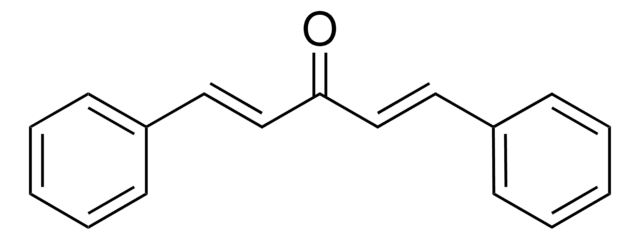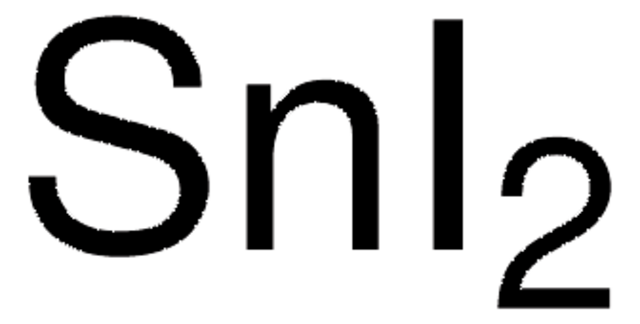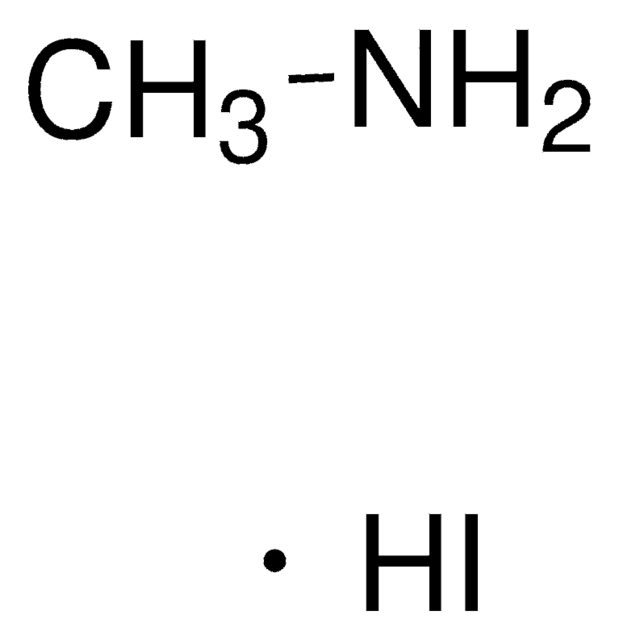203033
Cesium iodide
99.999% trace metals basis
Sinonimo/i:
Caesium iodide, Caesium monoiodide
About This Item
Prodotti consigliati
Livello qualitativo
Saggio
99.999% trace metals basis
Forma fisica
solid
Impurezze
≤15.0 ppm Trace Metal Analysis
Punto di fusione
626 °C (lit.)
Densità
4.51 g/mL at 25 °C (lit.)
Stringa SMILE
[I-].[Cs+]
InChI
1S/Cs.HI/h;1H/q+1;/p-1
XQPRBTXUXXVTKB-UHFFFAOYSA-M
Cerchi prodotti simili? Visita Guida al confronto tra prodotti
Applicazioni
It can be used to prepare brightest red emitting Cs2HfI6 scintillator which is applicable in high resolution gamma spectroscopy.
It can also be used tosynthesize Cesium based nanocrystals for the detection of ionizingradiations.
Caratteristiche e vantaggi
- High quantum efficiency
- High stability to ambient air and gas environment
Avvertenze
Warning
Indicazioni di pericolo
Consigli di prudenza
Classi di pericolo
Aquatic Acute 1 - Repr. 2
Codice della classe di stoccaggio
13 - Non Combustible Solids
Classe di pericolosità dell'acqua (WGK)
WGK 2
Punto d’infiammabilità (°F)
Not applicable
Punto d’infiammabilità (°C)
Not applicable
Dispositivi di protezione individuale
dust mask type N95 (US), Eyeshields, Faceshields, Gloves
Scegli una delle versioni più recenti:
Possiedi già questo prodotto?
I documenti relativi ai prodotti acquistati recentemente sono disponibili nell’Archivio dei documenti.
I clienti hanno visto anche
Articoli
Colloidal quantum dots (CQDs) are semiconducting crystals of only a few nanometers (ca. 2–12 nm) coated with ligand/surfactant molecules to help prevent agglomeration.
Il team dei nostri ricercatori vanta grande esperienza in tutte le aree della ricerca quali Life Science, scienza dei materiali, sintesi chimica, cromatografia, discipline analitiche, ecc..
Contatta l'Assistenza Tecnica.











